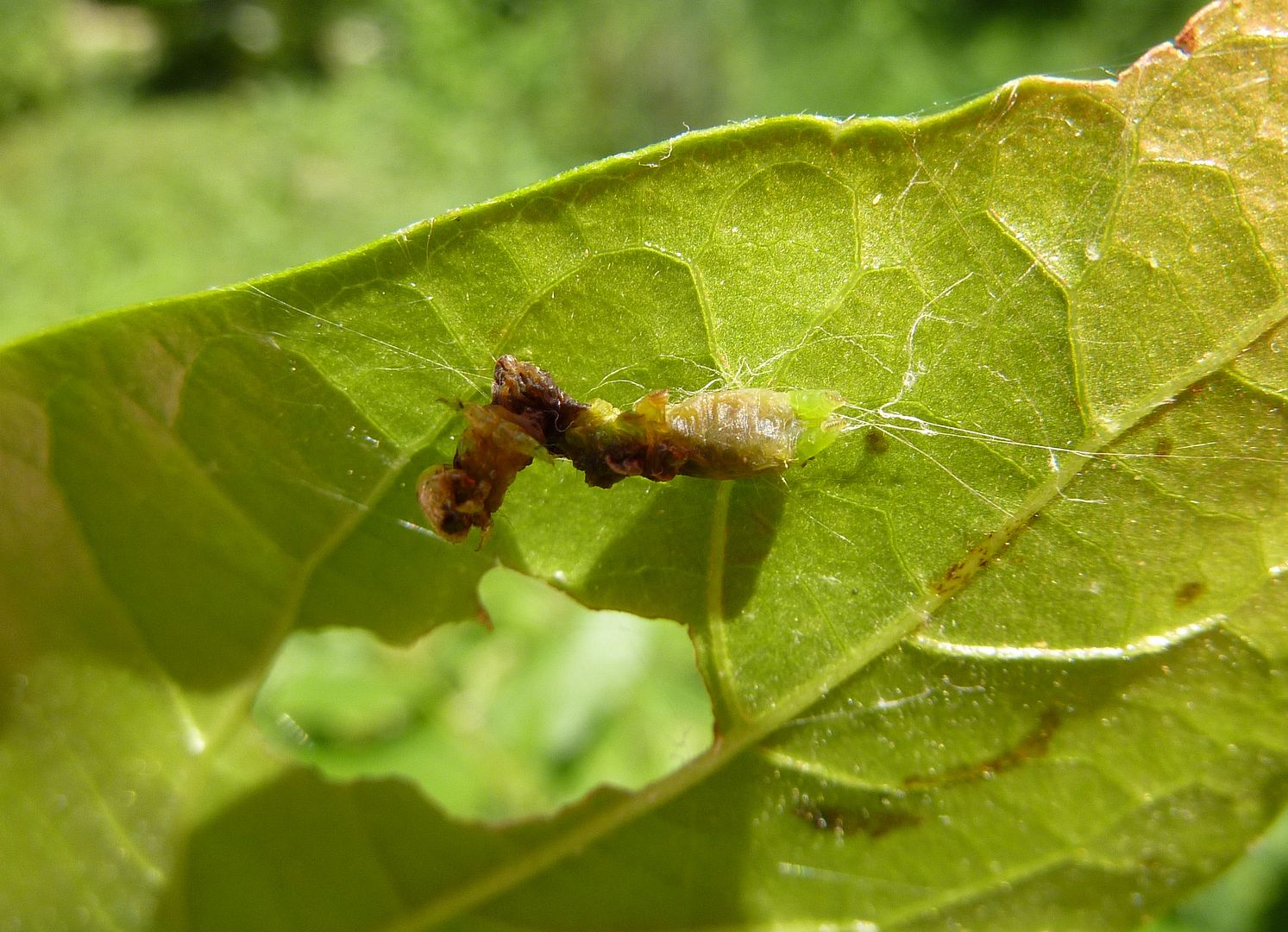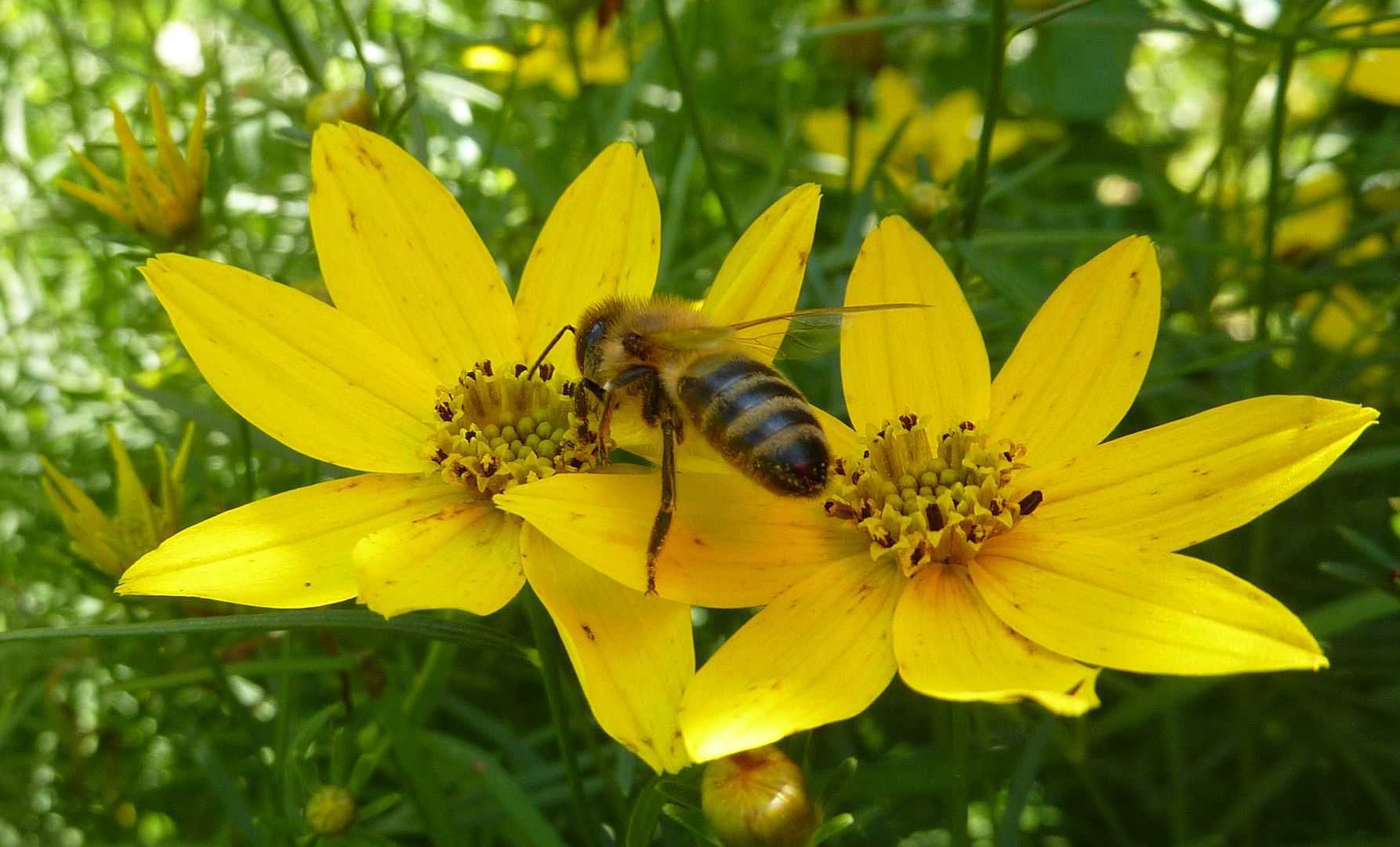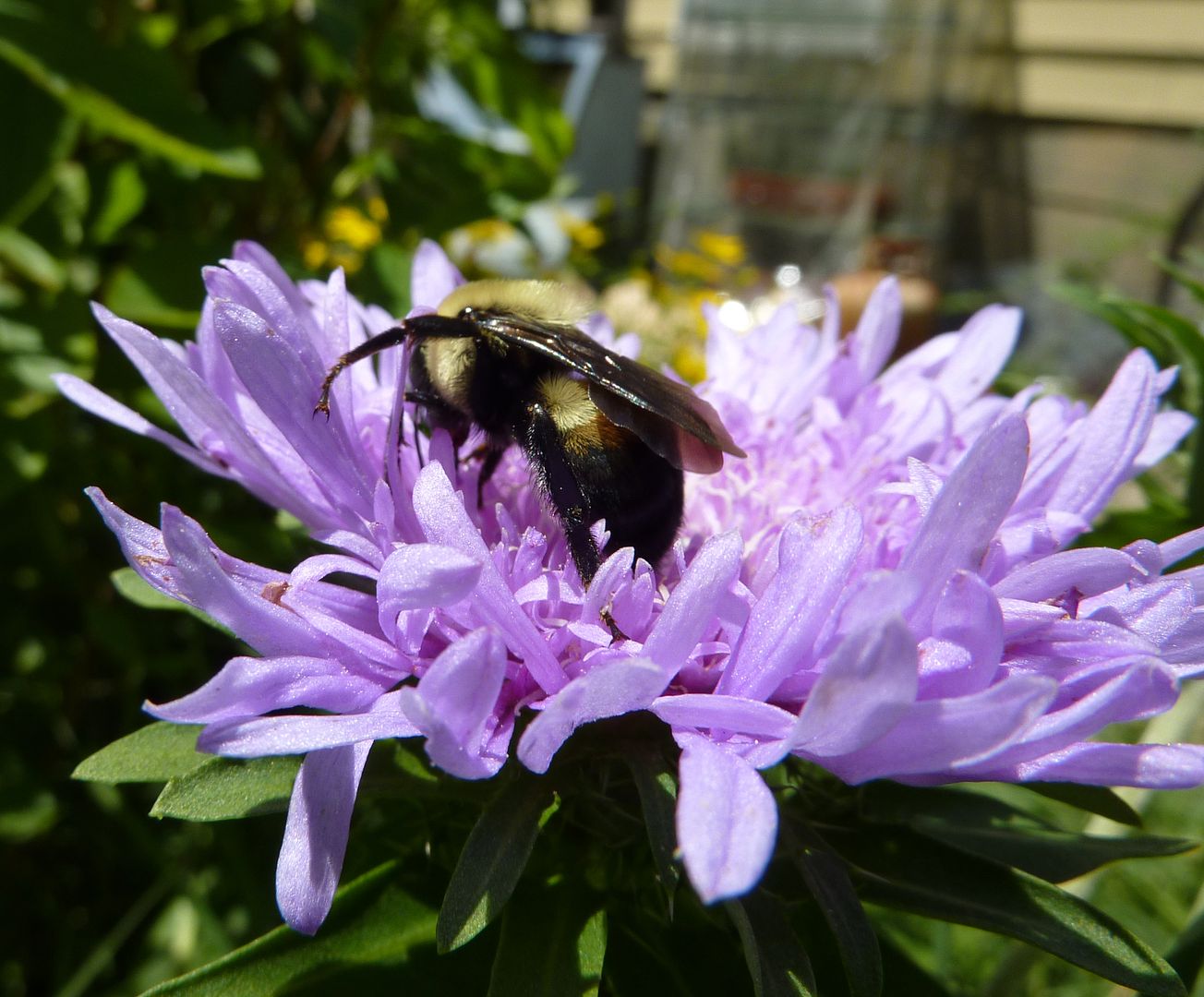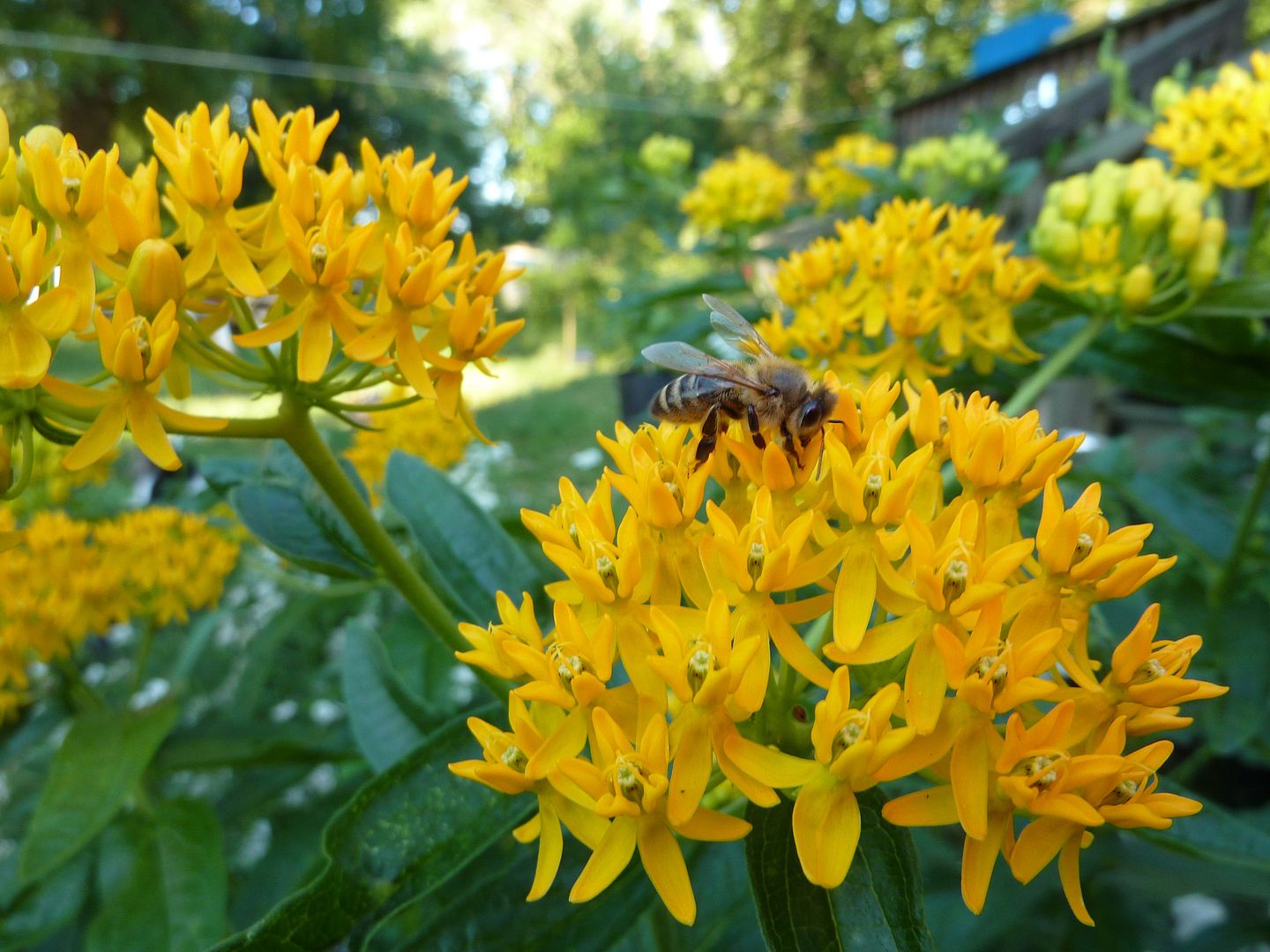So I'm finally at that time of year when the honey bees notice I have a garden. Honeybees are great at what they do but sometimes I wish they were more A.D.D. about it. Bumblebees have that, and they just go through the whole garden saying "Hay look a flower! Hay look a flower! .... Hay look a flower!" over and over and over again. It's a more even pollination because they're working them as they go. Honeybees have a habit of playing favorites which is okay but limits their ability to find new blooms. Often times it seems the younger foragers, in an effort to mimic the older bees, will copy bumblebees in their A.D.D. quest for nectar.
This leads to all sorts of new and exciting nectar sources, like Coreopsis. As you can see this has been blooming for a while now but nothing has really been working it.
I finally saw my first honey bee on it earlier today. She spent quite a while on the plant working each bloom then left. A few return trips were likely made as the day went on.
It's said that one honey bee will produce one and a half tablespoons of honey in her lifetime. If I can make that journey to and from the hive quicker then I can get that bee for all she's worth. While we're on the topic let's crunch some numbers real fast. A good honey bee queen is laying between 1,500 and 2,000 eggs a day. That's potentially 2,000 workers that will bring in 2,000 1.5 tablespoons of honey a day. Assuming they're bringing in food for 275 days out of the year that's 550,000 bees/tablespoon and a halves of honey. This doesn't really add up though. I don't know what that adds up to in pounds of honey but the other saying is a good hive on a good year will bring in 100lbs of honey. I don't think either estimate is accurate though. This is just a drawn out way saying pollinator friendly gardens make more honey.
Enough has started blooming now (finally) that I'm going to start seeing honey bees more often in the garden, without the aid of a ladder. Yesterday's post was complaining about the lack of successive blooming... well now everything is going to bloom together it seems.
A few Stoke's Asters have started blooming, Stokesia laevis. This isn't a true aster but used to be in the Aster genus I believe. The bees sure work it as though it were an aster though. It's a pretty plant too, but benefits from an acidic soil. I saw a few honey bees working it today as well.
The earliest crème de la crème has also started blooming. You can have your lawn of clover, your prairie of wildflower, but give me one Asclepias tuberosa, Butterfly Weed and I'll be set. This is a yellow form; They are normally a brilliant orange.
Besides a few houseflies this was the only honey bee on the plant. But give it a few days and I guarantee this will be covered in honey bees. I hope to have a video up for Pollinator Week.
About a month earlier I should have been seeing the related Swamp Milkweed, Asclepias incarnata. It's blooming now but not as well as it should be. Many of the flower heads formed then died off it. Hopefully it will fair better next year.
Beekeepers don't like planting milkweeds because they claim it can kill the bees. There's even a documentary style video on youtube going as far to suggest Milkweed does this on purpose. Never mind the fact that assassin bugs can easily take advantage of insects caught on the plant. It's a temporary issue where the bee is stuck, they usually get free with time. But they're still in a bad position that no flying insect likes to be in.






